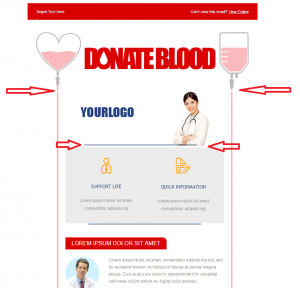All of us, customers, sales people, marketing, customer service—everyone, daily face a number of converging forces which adversely impact our own and our organizations’ performances. The result is we are overloaded, overwhelmed, and probably not accomplishing what we should or could achieve.
Taken individually, none of these forces is much concern. In fact some have very positive impacts on the results we produce But together they conspire to derail us, individually and organizationally.
Let’s look at each one:
Rising workloads: In the past 15 years, every organization has focused on getting as lean as possible. 15 years ago, there may have been many more people responsible for accomplishing what each of us is expected to do today. We cut headcount viscioulsly (and probably appropriately), but much of the work didn’t disappear. The same work was spread across fewer people. In some cases, smart companies re-engineered a lot of what they did, slimming things down and doing what they could to eliminate unnecessary workloads. But fast forward to today, organizations, our customers and ours, are running very lean. Everyone has more on their plates then they can deal with. As a result, a lot doesn’t get done—sometimes it’s the important stuff, at least for us.
The interruption/distraction phenomena: Partly to deal with the rising workloads or a result of rising workloads, we live in an interupt driven world. Emails flow in at ever increasing levels, messages from any number of social platforms, texts, phone calls. An ever increasing number of channels conspire to interrupt us, each demanding attention, or at least distracting us enough to decide whether they merit attention. Just as I’m writing this post, the phone is ringing, I pause to look at who it is and consider whether to pick in up or not. Just that small interruption caused me to lose focus for a moment. Refocusing myself, getting back to this article took a few seconds. Multiply that by hundreds of times a day–not juts phone calls, but all the other things that compete for our attention. Just deciding to do nothing on those interruptions, has a huge impact on our ability to get things done.
Layer on top of that, the interruptions and distractions we choose to do something about. We shift what we had been working on to the background, do something new for a while, at least until we are interrupted again, then perhaps do another thing new, at some point coming back to the original task–all until we are interrupted or distracted again. We’re doing a lot of work–but not necessarily getting a lot done.
Change and Innovation: Other “good” things happen that while good in themselves have the potential to make the overload/overwhelm challenge even greater. There are faster rates of change and innovation. Product life cycles that were measured in years are now measured in months or weeks. Disruptive alternatives, changing the landscapes of our traditional markets and competition arise every day. New technologies, new science, new capabilities add layers of complexity to our customers, our own businesses and the business ecosystems we work in. The rate of change, the rate of new information associated with that change, the complexity of the issues we, our customers, our companies, have to deal with is skyrocketing.
Complexity and Specialization: Things become so complex we can’t deal with everything, that gives rise to specialization. Because there is so much knowledge needed to accomplish our goals, because the issues are so complex, we need people with specialized skills, knowledge, and capabilities to help get things done. Om the face of it, specialization can be very powerful, it provides the potential of shifting (probably not reducing) workloads to people better equipped to do certain tasks. But specialization provides another burden–increased communication and need to share information and knowledge.
Collaboration: We now collaborate more, partially due to specialization, partially due to increased complexity, partially due to risk aversion and consensus decisionmaking. While collaboration can be very powerful, it adds several layers to the potential for being overloaded and overwhelmed. Each person we work with has needs for information and data from us to do their jobs. There is a never ending stream of information and data from these people directed toward each of us, some of it necessary, some of it not, but we have to filter through all of it to figure out what is important and what is not. But collaboration doesn’t stop with our own internal work teams, it crosses over to working with our customer teams, it crosses over to working with out networks–yeas we are building our networks, adding more connections on a daily basis.
Social Networks: Each of those connections provides information and data. Much of it useful much of it not, but we still have to “process and evaluate” each piece to make a determination. As our networks expand, and the tools we leverage to network, the rate of distraction and overload skyrockets. We are overwhelmed with more and more data and information–tweets, Snapchats, LinkedIn messages, Facebook messages, Piinterest, Instagrams, text……. The very things that are supposed to make us more connected and help us learn, serve to disconnect us.
Open Workspace: What’s more, we design our workspaces to be open to stimulate collaboration and communication (and there’s a certain Silicon Valley chicness about everyone in one open room). At the same time, these open offices maximize the potential for active and passive interruption and distraction.
Technology, offers us the potential of simplifying this. We have new tools and apps that are supposed to simplify things for us. In many cases they do, they enable us to become more efficient—accomplishing much more than we could without them, in the same amount of time (or less) They also enable us to get more information and insight–we have sources of information never before available, we have quantities of information that become overwhelming. And we have another layer–we have to learn and master each of the tools so they can make us more efficient and more informed.
You can see where I’m going on this.
The things we do to manage our ever increasing workloads do help, but there are, perhaps, unintended burdens or opportunities they add, which serve to increase the complexity and volume of information and data that overloads and overwhelms us.
Twenty years ago, we used to worry about not having enough information to make informed decisions within a certain risk profile. Today, we suffer from the opposite, we have too much, divergent information, we have to sort through to figure out what we need to make an informed decision, ironically, we always seem to be missing the most critical piece–which stimulates a search for more.
Classically, the way we sought to manage complexity, overload and overwhelm was to re-engineer business processes and workflows. We focus on vicious prioritization and focus. We try to reduce friction between linked processes, organizations, functions and people. The lean and agile folks would identify everything that didn’t add value to the process, labeling it as waste and eliminating it.
Those things work, we have to simplify work, workflows, and communication as much as possible. But those are thing largely external to us as individuals.
But there is another overload and overwhelm factor that’s relatively new–it’s cognitive overload. (As a sidenote, the rise in literature and talk about mindfulness is both a recognition and an attempt to manage cognitive overload.)
Neurologists, studying cognitive overload have put a label to it ADT, Attention Deficiency Trait. In some ways, not dissimilar to ADD. But while ADD is a neurological disorder, ADT is a result of our environments–how we live and work every day. (Reference “Overloaded Circuits, Why Smart People Underperform,” HBR, January 2005
As our brains are asked to process ever increasing amounts of disparate and diverse information, the ability to solve problems declines, the number of mistakes we make increases. The brain, in many senses acts very much like a computer with it’s “core and peripheral memory.” The “core memory” of the brain, the part that handles the Executive Function, can only retain and act on a few piece of information at any one time. The information it doesn’t need may be filed into the parts of the brain that represent long term memory (our brain’s version of disk). As the amount of information we deal with increases, the brain starts to panic or thrash.
You can simulate this on your laptop or tablet. Open up as many applications as you can, get as many things going on at one time—for example, do some big downloads, have video, music, and other applications running, try doing some video editing, music editing, complex analysis. What happens, your computer slows down. It makes mistakes, apps shut down.
Our brains in cognitive overload start doing the same thing. Rather than moving faster, we slow down, we can’t make decisions, we make mistakes.
It happens to everyone, no one is immune to cognitive overload. It is overload and overwhelm at an individual level–which impacts overall organizational performance.
What do we do about it?
Some of the things we do to reduce organizational overload and overwhelm work for cognitive overload. Radically simplifying and removing complexity from our organization and how we work is a great starting point. This reduces the number of things we have to think about, decide upon, and remember.
Elimination of disruptions and interruptions is important. Hopefully, no one brags about their abilities to multitask anymore. But consider some simple steps, enabling people to focus, concentrate, and get more done. Things like no use of computers, phones, tablets other than a single one for presentations. This will prevent messages interrupting and distracting us (just being aware of the interruption creates a cognitive signal). What about note taking—well a lot of data shows, the physical act of writing notes, rather than typing them, drives a higher degree of retention and understanding.
Time blocking, where we eliminate everything but the specific task we need to achieve. No multitasking, no switching from project to project, no distractions from incoming messages, social channels, etc. Pure focus on the task we are trying to achieve.
Digital deadzones, digital “fasts” are all things that help each of us deal with this challenge.
Standardizing on saying “No,” encouraging your people to say “No,” rather than constantly saying yes and adding to the to-dos.
Getting physically out of the office, getting into the field, working with your people and your customers is tremendously focusing and liberating. Also, remember your customers face the same cognitive overload–perhaps the best value you can create is helping them recognize, reduce and manage it.
As managers and leaders, too often, our attempts to “help” our people have just the opposite impact, it creates cognitive overload. Adding technology, new apps, new systems and tools. Adding greater availability to research and get more information, may be driving overload more than knowledge. But in our drive to help–to drive productivity, efficiency, and results, we tend to pile on more and more. As we add new things, new tools, new capabilities, we should also be eliminating things. My rough rule of thumb is that for every new thing we add, every new tool, every new initiative; before adding we need to eliminate two other things.
Managing and reducing complexity is critical–but so difficult in a world where things seem ever more complex. But if we fail to manage and reduce it, if we fail to simplify, we will continue to suffer with overload and overwhelm—at organizational and individual levels. The more we do this, the more it overwhelms our abilities to achieve results.
Business & Finance Articles on Business 2 Community(69)





